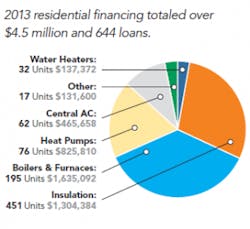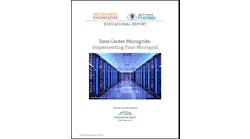It’s always hard to make the argument that things could have been worse. But that’s the reality in Connecticut as it emerges from a brutal winter.
State regulators are fielding complaints from consumers who have seen their electricity prices skyrocket this winter. The state is investigating what happened. But for anyone who has followed New England’s energy markets, price spikes are not a new story. The region’s natural gas supplies get tight during periods of extreme cold because power plants and households vie for limited supply and this drives up electricity prices.
Connecticut wants to shed its moniker of being a very expensive place to buy a kilowatt of electricity. With residential rates at 17.57 cents/kWh as of December 2013, Connecticut does not have the highest priced electricity in the lower 48 states – that’s Rhode Island at over 20 cents/kWh – but Connecticut remains well above the 11.72 cent/kWh national average.
Here’s the good news. Connecticut has been on a drive to reduce its high energy prices with energy efficiency. (See our story, Connecticut: Next Top Dog for Energy Efficiency? ) And it appears to be making headway.
Connecticut cut energy use 285.8 million kWh last year, for a cost savings of $53.4 million annually and $630 million over the lifetime of the energy-saving installations and improvements. This comes from a report delivered this week by the Connecticut Energy Efficiency Board to state lawmakers, policymakers, efficiency advocates, and stakeholders.
In related news, Connecticut on March 6 issued its second microgrid RFP. See our story here.
A big chunk of last year’s savings – $29.2 million – came from 477,000 homeowners and renters who participated in a range of service, rebate,
Source: Energy Efficiency Board, 2013 Programs and Operations Report
retail product and new home construction programs. The effort received a boost from a low-interest rate loan program for homeowners.
About 4,000 businesses and city agencies accounted for the remaining savings of $24.2 million for the year. They received energy audits, rebates, incentives and financing to improve equipment, build in an energy efficient manner and institute behavioral programs.
“A number of these businesses engaged in our ‘comprehensive initiative,’ a strategy that rewards businesses who implement multiple energy-saving measures at the same time,” said Jamie Howland of Environment Northeast and chairman of the Connecticut Energy Efficiency Board. “For example, simultaneously installing LED lighting and a premium efficiency HVAC system. The long term return on investment is higher when customers take this approach.”
The report highlights several specific efforts, among them.
- Seventy-seven towns and cities pledged to reduce energy use in municipal buildings 20 percent by 2018, and to secure 20 percent of the municipal power from renewable energy by 2018.
- Pilot programs by the state’s two investor-owned utilities used a variety of communication methods to reach residents and businesses in certain areas, inform them about energy efficiency programs, and offer them fixed pricing and financing options for insulation and heating equipment.
- Schools in the state are creating unique E-Houses, high school laboratories for learning green construction.
Connecticut’a achievements are in keeping with a larger trend in New England. The six states spent almost $2.3 billion on energy efficiency from 2009 to 2012 and ISO New England forecasts they will spend another $6.4 billion from 2017 through 2023. The grid operator expects the upcoming energy efficiency investment to avert 1,504 GWh per year of energy use, creating a total savings of about 10,525 GWh. A preliminary report, issued by the ISO in February, forecasts that peak demand over the seven-year period will fall 1,426 MW.
For more details, the Connecticut Energy Efficiency Fund report is here and the ISO-NE preliminary forecast is here.






